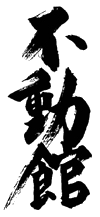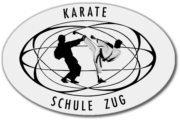What is Karate

Karate-Do comes from Japanese and consists of three characters.
Kara = empty or unarmed
Te = hand and
Do = way Karate-Do is the art of fighting with "empty, unarmed hands".
It is a martial art of unarmed self-defense in which the limbs of the body are trained to become natural defensive and offensive weapons. Karate-Do is a high level physical and mental school, an effective form of self-defense and a dynamic martial art. The ultimate goal is not victory, but the perfection of character.
Origin of Karate-Do
The beginnings of Karate-Do lie far in the past. It is probably based on the constant desire of people to be able to defend themselves. Karate-Do has its origins in India and China. Buddhist monks, Chinese soldiers and traveling salesmen brought "secret" martial arts practices to Okinawa, an island group south of Japan.
Weapons ban
When the rulers of Okinawa banned the natives from owning any weapons, unarmed martial arts experienced a great boom. Okinawa-Te was secret to the public and was only passed on within the family. It had a strict philosophy, namely that of destroying the opponent without hating him. The decision as to whether the opponent or oneself would survive should be made without emotional reaction in order to protect one's own life and that of the family.
Okinawa-Te
From this knowledge and in combination with an indigenous martial art (Tode) the Okinawa-Te (Okinawa Hand) eventually developed. Three training centers emerged that cultivated styles named after the cities: Shuri-te, Tomari-Te (Shorin-Ryu) and Naha-Te (Shurin-Ryu).
The original aim of Okinawa-Te was to incapacitate an opponent with a single technique. This required an enormous amount of technical skill combined with mental strength. The dynamic punches, kicks and strikes, taking into account concentrated power and the greatest possible speed, were carried out on the sensitive parts of the body.
Spread of Karate-Do
Okinawa-Te was not demonstrated in public for the first time until around 1900. The man who is credited with developing Okinawa-Te into the world-famous Karate-Do we know today is Gichin Funakoshi, a resident of Okinawa. Gichin Funakoshi accepted an invitation to Japan to demonstrate Okinawa-Te at a demonstration of ancient Japanese martial arts. This demonstration was so impressive that Funakoshi was asked to stay in Japan to teach his art there. It was then that the name Karate-Do was chosen for the first time instead of Okinawa-Te. At the beginning of the 1950s, the martial art developed into a dynamic sport that made it possible to hold injury-free competitions. After the IOC (International Olympic Committee) Congress recognized karate as an Olympic martial art, all options are open to athletes at this level too.
FUDOKAN
At the beginning of the 20th century, the great masters of karate-do were friends with each other and all worked on the same project.
As karate-do became more sporty at the end of the 1950s, it became very popular, but also experienced a dramatic loss of traditional values and deeper spiritual knowledge. Karate-do became karate sport and world associations were formed that fought each other for power.
Many great masters who brought about changes according to their own ideas showed no tolerance for others or for things that were not understood. Japan stubbornly held on to a monopoly claim, which could not be maintained in martial arts. As a result of the split and collapse of the large organizations and the fight between the karate masters, the Fudokan style was officially founded in 1980. The idea of preserving the original karate-do values was at the forefront. Fudokan combines karate tradition and its true value with western knowledge and martial arts. Fudokan is a creative karate style that strives for dynamism and quality. It is a karate style that meets the needs of today.
The three ideograms of the word Fudokan mean:
The three ideograms of the word Fudokan mean:
FUDO = thoroughness, stability, hardness;
KAN = house
In a sense, Fudokan is the house of stable foundations.
As physical and mental requirements depend on age, Fudokan karate is geared towards the respective strengths in order to be able to use them to their full extent.
The variety of techniques allows Fudokan to develop and strive forward with individual potential, taking into account mentality and natural abilities.


